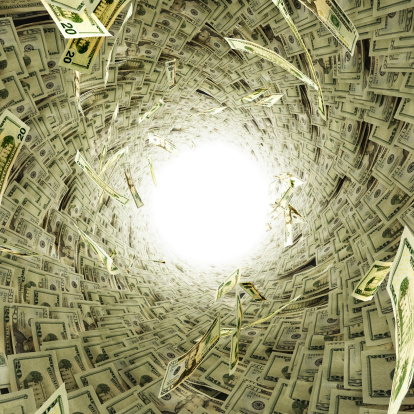The U.S. Department of Commerce is set to come out with the gross domestic product (GDP) reading Friday morning before the market opens. This will be the final revision for the second quarter GDP. While a second revision might not normally be a serious market-moving event, the sell-off in stocks on Thursday and volatility all week could act as a wild card in that sense.
The initial reading for the second quarter GDP was 3.1%, which was later revised to 4.2%. The GDP from the first quarter was much lower and negative at -2.1% due to a persistent cold weather keeping people home. That first quarter kept listing lower, and now the bias is that the second quarter will keep listing higher.
The Bloomberg estimate for the final GDP reading for the second quarter is 4.6%, a sign that economists are perhaps thinking they needed to play catch-up even further. This plays directly into the question about whether or not the GDP could create another sell-off. On most revisions we would not really worry about it, but this week it seems to be a fair worry. As a reminder, all four days this week have seen triple-digit moves up or down in the Dow.
Even with this slight increase in the GDP estimate, the big economic picture remains basically unchanged. The U.S. is still growing, despite weakness elsewhere in the world and despite some of the geopolitical tensions dragging down other economies.
At issue in worrying about a revision-induced sell-off is that the market is almost looking for an excuse for a sell-off. Are Americans really worried about economic fallout from bombing Syrian and Iraqi locations believed to be holding ISIL-related targets? Russia remains a threat in the news, but less than before. And Thursday’s sell-off in equity futures came on the heels of a dismal durable goods report from August — which was simply a give back from the massive jump in July, and this is a highly volatile reading.
Here were issues impacting the last revision:
- Corporate spending and profits had a big effect on this revision. Corporate spending increased $154.9 billion in the second quarter compared to a decrease of $201.7 billion in the first.
- The increase in nonresidential fixed investment grew more than previously estimated, while the increase in private inventory investment was smaller than expected. Real nonresidential fixed investment increased 8.4% in the second quarter, which leaped over the first quarter’s 1.6% posting.
- Exports of goods and services increased 10.1%, compared to the decrease of 9.2% in the first quarter. The GDP price index rose 2.1%, which is just above the estimate of 2.0%. The GDP price index remains relatively unchanged from the previous estimate.
- Real final sales of domestic product-GDP less change in private inventories-increased 2.8% in the second quarter, in contrast to a decrease of 1.0% in the first.
- Real final sales to domestic purchasers gained 3.1% versus 0.7% in the first quarter. Chain-weighted prices gained 2.1% annualized, compared to the consensus for 2.0% and the first quarter number of 1.3%.
ALSO READ: The Worst Performing DJIA Stocks of 2014
Normally we would not worry at all about a second revision in GDP tanking the market. This time still feels like it comes with more risks than other revisions. Before you panic too much, just remember that this revision is covering April 1 to June 30. What remains unfortunate is that markets have proven to be very poor barometers in pricing in all known information — and they have proven to be rather poor at their duty of acting rationally.
Are You Still Paying With a Debit Card?
The average American spends $17,274 on debit cards a year, and it’s a HUGE mistake. First, debit cards don’t have the same fraud protections as credit cards. Once your money is gone, it’s gone. But more importantly you can actually get something back from this spending every time you swipe.
Issuers are handing out wild bonuses right now. With some you can earn up to 5% back on every purchase. That’s like getting a 5% discount on everything you buy!
Our top pick is kind of hard to imagine. Not only does it pay up to 5% back, it also includes a $200 cash back reward in the first six months, a 0% intro APR, and…. $0 annual fee. It’s quite literally free money for any one that uses a card regularly. Click here to learn more!
Flywheel Publishing has partnered with CardRatings to provide coverage of credit card products. Flywheel Publishing and CardRatings may receive a commission from card issuers.
Thank you for reading! Have some feedback for us?
Contact the 24/7 Wall St. editorial team.


